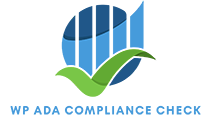Dealing with an uninsurable roof can be a significant headache for Indy homeowners. It not only compromises the safety and integrity of your home but also poses financial challenges when it comes to your roof’s insurance coverage.
In this comprehensive guide, Red Bird Roofing will walk you through everything you need to know to handle this daunting situation effectively.
1. Understand the Reasons for an Uninsurable Roof
- Aging: Roofs deteriorate over time, and if yours is reaching the end of its lifespan, it may be difficult to secure insurance coverage.
- Poor maintenance: Neglecting regular roof maintenance can lead to a variety of issues, such as leaks, cracks, or structural damage. Insurers are less likely to provide coverage for roofs in poor condition.
- Previous claims: If you’ve had multiple roof-related insurance claims in the past, insurers may deem your roof as high risk and refuse to provide coverage.
2. Assess the Condition of Your Roof
- Regular inspections: Have a professional roofing contractor inspect your roof regularly to identify any existing or potential problems.
- Determine the remaining lifespan: Assess whether your roof is nearing the end of its useful life and needs replacement.
3. Explore Financing Options for Roof Replacement
- Research government assistance programs: Check if there are any local or state-level programs that provide financial aid for roof replacement or repair.
- Look into financing options: Consult with financial institutions or specialized roofing financing companies to explore loan options for roofing projects.
4. Find a Reputable Roofing Contractor
- Seek recommendations: Ask friends, family, or neighbors for referrals to trustworthy roofing contractors who have experience in dealing with uninsurable roofs.
- Verify credentials: Ensure the contractor you choose is licensed, insured, and has a solid reputation in the Indianapolis area – like Red Bird Roofing
5. Document the Condition of Your Roof
- Take photographs: Capture detailed images of your roof, highlighting any visible damage to shingles, shake or tiles, and wear and tear.
- Keep records: Maintain documentation of all inspections, repairs, and maintenance performed on your roof.
6. Explore Alternative Insurance Options
- Seek specialized insurance providers: Some companies specialize in providing coverage for uninsurable roofs. Research and contact these providers to explore potential options.
- Consider self-insurance: If obtaining traditional insurance is not feasible, create a contingency plan to set aside funds for potential repairs or replacements.
7. Prioritize Regular Maintenance
- Schedule routine inspections: Regularly hire professional roofers to inspect your roof and address any minor issues before they escalate.
- Perform necessary repairs promptly: Fix any roof problems promptly to prevent further damage and reduce the risk of your roof becoming uninsurable.
Our Advice? Let Red Bird Roofing Handle It.
Dealing with an uninsurable roof can be challenging, but with the right knowledge and proactive steps, Indianapolis homeowners can minimize the impact. Remember, regular maintenance, addressing issues promptly, and exploring alternative insurance options are key to ensuring the long-term safety and sustainability of your home.






